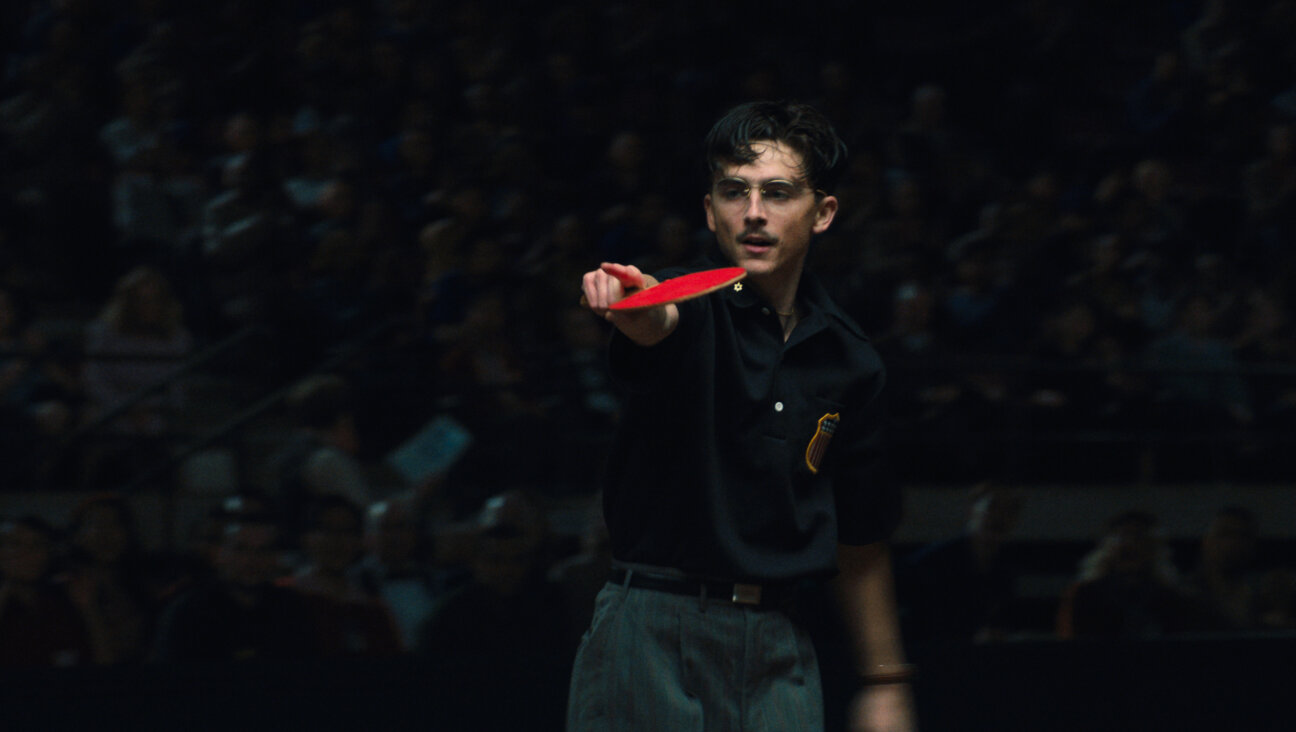A Distinguished History in Art Theft

Image by Courtesy of St. Martin’s Press
Hitler’s Art Thief: Hildebrand Gurlitt, the Nazis, and the Looting of Europe’s Treasures
By Susan Ronald
St. Martin’s Press, 400 pages, $27.99
In 2012, German investigators broke into the apartment of the Munich recluse Cornelius Gurlitt and confiscated nearly 1,300 pieces of modern art, much of it of murky or suspicious provenance. Gurlitt had inherited the works — a ravishing collection featuring Picasso, Matisse, Renoir, Chagall and a variety of German Expressionists — from his father, Hildebrand Gurlitt, an art dealer who had trafficked with top Nazis, banished artists and fleeing Jews.
Even as Allied bombs destroyed his native Dresden, the elder Gurlitt had managed to hide and save most of these treasures — for his family and for posterity.
The case, first reported by the German newsweeklies Focus and Der Spiegel, raised intriguing questions about the ownership of looted or otherwise displaced Holocaust-era art — an ongoing legal, moral and historical tangle.
The isolated Cornelius Gurlitt represented a conundrum in his own right. Der Spiegel headlined its November 2013 cover story “Interview With a Phantom” the lone interview he granted before his death in May 2014. Gurlitt willed the collection to Switzerland’s Kunstmuseum Bern, but also specified that any looted artworks be returned to their owners.
In “Hitler’s Art Thief,” Susan Ronald steps back from the contemporary imbroglio to explore who Hildebrand Gurlitt was and how he acquired so much great art in the first place. It is potentially a fascinating story, but her book is marred by clumsy prose, narrative missteps and a lack of focus.
To her credit, Ronald has done considerable legwork, obtaining Gurlitt family letters and digging through archival records to trace the art dealer’s movements and machinations. But her storyline is bogged down in confusing detail, and her attempt to embed Gurlitt’s tale in a larger narrative of Hitler’s rise to power, his conquests and his cultural policy, is more distracting than enlightening.
Gurlitt’s family, she tells us, was a distinguished one. His grandfather was Louis Gurlitt, a well-respected 19th-century landscape painter, and his father, Cornelius Gurlitt Sr., was an art and architecture historian. But Hildebrand’s grandmother was Jewish — a fact that initially hampered but never entirely derailed his career in Nazi Germany.
During World War I, after sustaining an injury, Hildebrand became, in Ronald’s words, “one of Germany’s Monuments Men, charged with safeguarding art in the occupied territories.” Afterward, he served as an art adviser to a rich industrialist, as the director of a small-town museum and as an advocate for German Expressionism. He developed a friendship with Albert Speer and ingratiated himself with other leading Nazis.

Concealed Treasure: One of the 1,300 art works found in Cornelius Gurlitt's collection. Image by Getty Images
“Gurlitt’s quick intellect and arrogance readily embraced the concept of eternal affability toward artists, gallery owners, and collectors,” Ronald writes in her ponderously overblown prose. Her mistakes of grammar and diction and her propensity for cliches undercut her authority. “Yet a chink in the Nazi armor glared brightly to those who had the supreme will to survive,” she writes, for example, in referring to the Toleration Regulations that temporarily protected German Jewish auction houses bringing in foreign currency.
After the Nazi regime condemned most nonrepresentational paintings as “degenerate,” Gurlitt became one of four dealers authorized by Hitler to trade in such art, much of it confiscated from museums. (Switzerland played a role in laundering these transactions, and New York’s Museum of Modern Art was among the buyers, Ronald notes.) Other works were purchased under duress or stolen from Jewish dealers, gallery owners and collectors, or from the artists themselves.
During the war, as the Nazis plundered France’s patrimony, Ronald describes the agile Gurlitt as the “leading official buyer of French art.” Citing contradictory invoices and other evidence, she also accuses him of “phony accounting,” tax fraud and “stealing from Hitler.”
Later, to Allied authorities, Gurlitt would use his Jewish ancestry to portray himself as a victim. And he would try to excuse his actions as an attempt to save the modern paintings he loved from Nazi bonfires.
In an April 2014 article in Vanity Fair, Alex Shoumatoff describes Gurlitt’s ethically treacherous path this way:
“He may have agreed to his deal with the Devil because, as he later claimed, he had no choice if he wanted to stay alive, and then he was gradually corrupted by the money and the treasures he was accumulating — a common enough trajectory. But perhaps it is more accurate to say that he was leading a double life: giving the Nazis what they wanted, and doing what he could to save the art he loved and his fellow Jews. Or a triple life, because at the same time he was also amassing a fortune in artworks. It is easy for a modern person to condemn the sellouts in a world that was so inconceivably compromised and horrible.”
Ronald, without offering much psychological insight, is somewhat tougher on Gurlitt. She calls him “one significant cog in the criminal machinery of state,” someone who “stole the lives of his victims, as well as the lives of his wife and children.” Having once glimpsed Gurlitt-owned paintings in a Swiss bank vault, she also takes note of the gaps in her saga — and promises that “there remain many more mysteries to unveil.”
Julia M. Klein is a cultural reporter and critic in Philadelphia and a contributing editor at Columbia Journalism Review. Follow her on Twitter, @JuliaMKlein.















